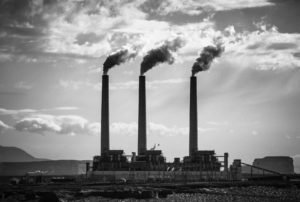A new report says the Government would have got better bang for its buck if it had de-linked the emissions trading scheme promptly after announcing it would not sign up to the second commitment period of the Kyoto Protocol.
 Motu Economic and Public Policy Research released the paper today, outlining the financial consequences of leaving a window where cheap foreign units were still available before de-linking from the Kyoto market.
Motu Economic and Public Policy Research released the paper today, outlining the financial consequences of leaving a window where cheap foreign units were still available before de-linking from the Kyoto market.
The report and associated material are available on scimex.org.
The Motu report follows from yesterday’s Morgan Foundation report on the ‘dirty dozen’ companies that the foundation says used the most ‘hot air’ carbon credits from Russia and Ukraine. Information about the Morgan report and expert reaction are available here.
The Science Media Centre gathered the following expert reaction. Feel free to use these comments in your coverage. Contact the SMC for more details.
Dr Ivan Diaz-Rainey, senior lecturer, Department of Accountancy and Finance, University of Otago, comments:
“The Motu paper does not tell us anything terribly revolutionary (it builds somewhat on the work I have done on NZ ETS). The paper is arguing that essentially a policy mistake was made by not de-linking NZ ETS shortly after the announcement that NZ would not take part in CP2 [the second commitment period under Kyoto].
“So ‘understandably’ (and this is where Motu and Morgan disagree) market participants, knowing that they would not be able to continue to import cheap allowances in the future, ‘filled their boots’ with them while they could.
“They used these imported units for compliance and saved their domestic ones (they go into the piggy bank so to speak). The fact that the bank is so full means the government could not sell (auction) new units if it wanted and therefore is missing a revenue opportunity.
“I agree that to announce an exit from CP2 and not de-link sooner was a mistake but I think this overshadows a more fundamental design mistake which was to have allowed unlimited importation in the first place – this looks horribly naïve given that no other system in the world allows importation of more than 20 per cent.
“Had importations been limited from the outset to say 10 per cent, NZU [New Zealand Units] prices may not have crashed and the government may not have felt like they needed to exit from CP2 to support prices. This is all a sorry tale and there seem to be a bit of a blame game going on. This is a shame. We need to look forward with respect to NZ ETS.
“What is interesting right now is that prices have risen a good deal despite this overhang of banked allowances. Prices have risen first because we delinked but also because the 1 for 2 deal is going.
“Prices are getting close to a level where afforestation of marginal land may be encouraged, so it is not all doom and gloom. Currently, the price of carbon in NZ is double of that in Europe. That said prices here and in the EU are far from where economists think they need to be to seriously tackle climate change.”